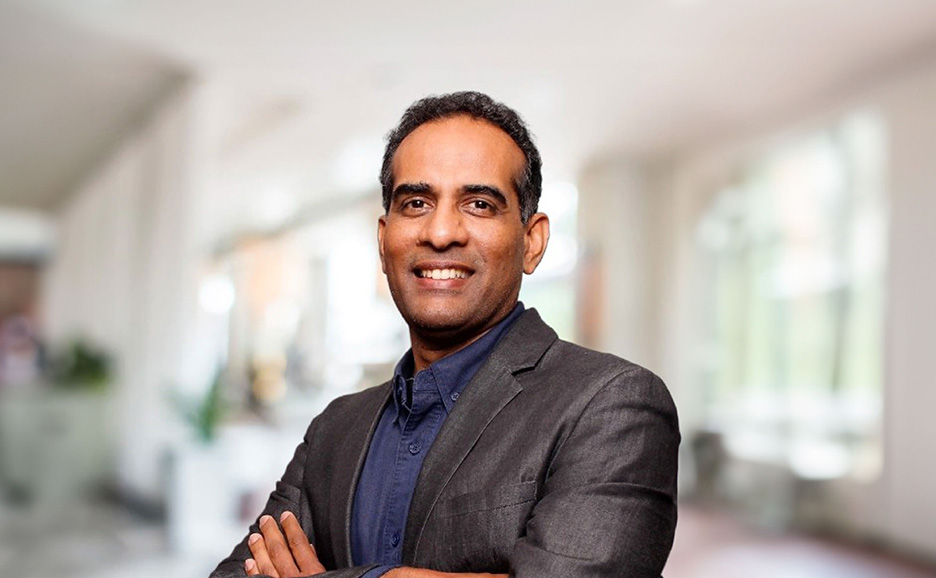Creating a borderless world Three technologies that can help eliminate society’s digital divides

Article|2024-03-11
6 minute read
Organizations have a host of technologies at their fingertips to help promote equality and inclusion while reaching customers in ever greater numbers, says Mahesh Krishnan, CTO Oceania at Fujitsu.
For many of us, the rapid development of digital technologies has created myriad benefits, improving access to vital goods and services at the touch of a button. But others have been left behind. Factors such as socioeconomic status, geography, generational trends and educational background can stop some people from accessing online resources, which creates or exacerbates existing societal inequalities.
But it doesn’t need to be this way. Organizations can use technologies to eliminate digital divides and promote social equality and inclusion. And this isn’t just positive for each company’s corporate social responsibility – by making technology more accessible, they also get access to a bigger customer base and a more diverse talent pool to draw varied perspectives and expertise from.
“By converging the physical and digital worlds, we can create a borderless world where, irrespective of who you are – your background, your physical limitations, where you live, rich or poor – everyone is equal.”
Three digital divides and the technologies that could close them
1. Affordable internet access: Mobile networks such as 5G
Building accessible internet infrastructure is still a problem in many parts of the world. The cost of setting up wired internet is too high for developing nations, and it’s an issue even in some developed countries such as Australia, where it’s not economically viable to lay down cables in remote locations.
Without the internet, disadvantaged groups are less able to access vital services such as social support programs, education and financial services. This can make income inequality worse and reduce productivity.(*1)
Poverty, remoteness and political instability might inhibit wired internet infrastructure, but low-cost smartphones means that more people than ever are using mobile devices to get online. Over half of the global population – some 4.3 billion people – now own a smartphone, with four billion using them to access the mobile internet. (*2)
But 5% of the world’s population is still not covered by mobile broadband, which creates an opportunity: by contributing funds to 5G development and the next generation of 6G networks, mobile and network operators can help to accelerate reliable internet access for millions of people.
As for other industries, organizations must make their digital services easy to use on affordable mobile devices and consider lower literacy levels, content compatibility with older devices and making content available in local languages. This can make a huge difference in emerging economies. In India, for instance, most people – rich, poor, young or old – have access to cellphones, which means that even small street vendors with very little property infrastructure can receive payments for their goods by simply giving customers a QR code to scan.
“The issue is more complex than just access to the internet or a device. You also need the availability of services such as digital banking in order to access needed functions.”
- (*1) Mercedes García-Escribano, "Low Internet Access Driving Inequality", International Monetary Fund (IMF), June 29, 2020
- (*2) "Smartphone owners are now the global majority, New GSMA report reveals", GSMA, October 11, 2023
2. Supply chain transparency: Blockchain
For a long time, there has been a digital divide between small and medium-sized enterprises (SMEs) and larger organizations when it comes to ensuring authenticity of information and providing a tamper-resistant and transparent record of transactions. Historically, bigger companies controlled this information, so small enterprises couldn’t verify whether their suppliers were acting responsibly and legally. As a result, they risked losing the trust and loyalty of their customers.
Blockchain could change that. It’s a digitally distributed, immutable and decentralized public ledger that gives everyone supply chain transparency. Information stored via blockchain is tamper-proof and controlled collectively by the stakeholders involved, so both consumers and companies can rely on it.
At Fujitsu, we worked on a solution called tex.tracer that promotes sustainability in the textile industry. It uses blockchain technology to store and notarize supply chain data about a product, which allows brands and consumers to make educated decisions about their suppliers and what they buy. Users simply scan a QR code on an item to get the entire supply chain history – where the cotton was grown, the factory where the clothes were stitched together, the designer who worked on it, its carbon footprint. By storing their data on a blockchain, organizations can enable companies of any size and in most sectors to access supply chain information easily and cheaply.
“One of the biggest benefits of blockchain is that it’s tamper-proof – we know that nobody has messed around with it.”
3. Healthcare: Artificial intelligence
Across the world, particularly in remote areas where resources are sparser, there are people who still have problems accessing specialist health information and expertise. Enter artificial intelligence (AI), which by augmenting the role of doctors can improve access to healthcare professionals.
Using digital tools powered by AI technology, healthcare providers can diagnose and treat patients faster than before – even in remote clinics. Cross-sector organizations should consider including AI-backed health tools in their employee benefits packages so members of their workforce can receive proactive medical care.
At Fujitsu, we’re working with Helsinki University Hospital in Finland to develop an app that helps pregnant people to self-diagnose the blood glucose issues that lead to gestational diabetes. And in Australia we worked on a project that uses AI and machine learning to quickly go through brain scans and flag any potential cases of aneurysm. Then, an expert comes in to validate each one.
Discovery AI, meanwhile, can uncover causal relationships in large amounts of data, which could help toward personalized treatment. In cancer care, for instance, when a particular cancer drug is ineffective for a specific group of people, this AI can analyze their genetic profiles to identify compatible alternatives. That would lead to faster access to the right treatment.
“In healthcare, there are lots of use cases for how AI can augment humans and help narrow down the digital divide in places where there isn’t the necessary infrastructure or the expertise to help patients.”
Openness and inclusivity are key to eliminating digital divides
Companies must consider the needs of people from all sections of society when investing in different technologies. Follow these three guiding principles to help create a fairer digital world:
- Focus on inclusivity. Provide digital services that are easy to access on affordable mobile phones. And think about marginalized communities and individuals when it comes to cost and usability of services, so that even people who have limited digital literacy can access them.
- Explore Web 3.0 and blockchain. Blockchain and decentralized storage can enable everyone to access authentic information and help SMEs to compete with the larger companies.
- Investigate how AI can reduce pressure on people. The benefits of AI aren’t limited to healthcare – you can use it to augment human input anywhere where resources are stretched.
Instead of allowing the advance of digital technologies to deepen society’s inequalities, organizations have a chance to reduce digital divides between rich and poor, old and young, rural and urban, and developed and developing nations. Will they take the opportunity?
Mahesh Krishnan
Chief Technology Officer for Fujitsu Oceania
Fujitsu Australia Limited
Mahesh Krishnan is the CTO for Fujitsu, Oceania, where he focusses on adoption of Fujitsu’s key technologies. He has over 30 years of experience in the IT industry, has written a couple of technical books, speaks regularly at conferences and was recipient of Microsoft Most Valuable Professional award for 5 years in a row.

Fujitsu Uvance
Innovative solutions that address business challenges and solve societal issues


You may like
How AI creates more sustainable customer journeys

A financially sustainable approach to carbon neutrality

Happier employees can have a positive impact on your value chain

Fixing Gen AI trust issues: three focus areas to keep on your radar



